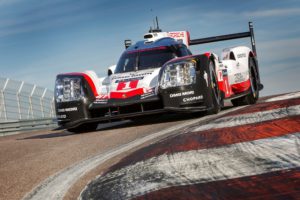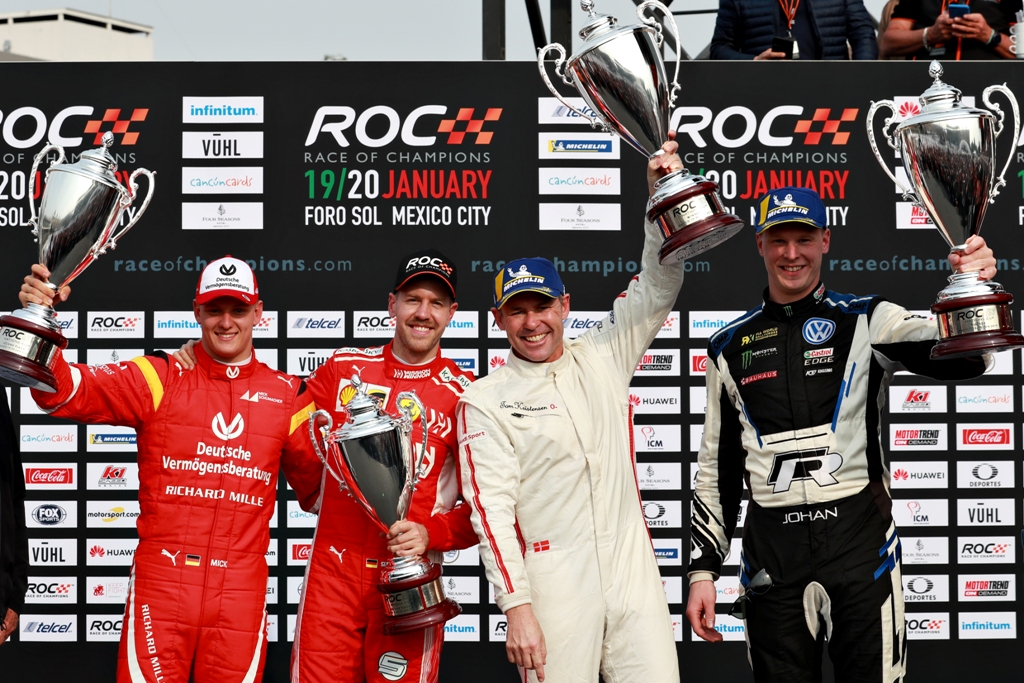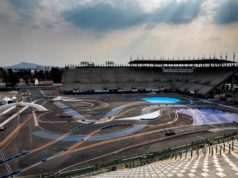Porsche unveiled the new 919 Hybrid at the Autodromo Nazionale di Monza. The Le Mans prototype, that delivers a system output of around 900 PS (662 kW), was comprehensively reworked. Porsche aims for a hat-trick with it. The target is to win the Le Mans 24-hours race (June 17/18) as well as the FIA World Endurance Championship titles for Manufacturers and Drivers respectively for the third consecutive time after 2015 and 2016.

Fritz Enzinger, Vice President LMP, faces the season with a great deal of respect:
“Each and every one of the nine endurance races presents a challenge. Reliability is the basic requirement. At four times the duration of the other races, Le Mans forms the pinnacle of the series. This 24-hour race pushes both men and machine to their absolute limits. Toyota is set to be a very strong contender in the top-tier LMP1 category for the 2017 season. We will face up to them with a meticulously enhanced Porsche 919 Hybrid and a team of six first-class drivers.”
The technology of the Le Mans prototype
The 2017 model of the Porsche 919 Hybrid deploys a range of new innovations, particularly in the vehicle’s aerodynamics, the chassis and the combustion engine. Team Principal Andreas Seidl, who continues to serve as acting technical director, reports: “For the 2017 season, 60 to 70 per cent of the vehicle is new development. The basic concept of the 919 Hybrid still offers scope to optimise the finer details and further boost efficiency. The monocoque is the same since 2016. The team assessed the optimisation potential of all other components and, in most cases, adjustments made accordingly.” As in Formula 1, the monocoque is made from a carbon-fibre compound using a sandwich design.

Aerodynamics
The technical regulations for the 2017 WEC introduce further limitations in terms of the dimensions of some body components that affect aerodynamics. In an effort to increase safety, the new measurements reduce the downforce of the LMP1 prototypes, which in turn lowers the vehicle’s cornering speed for safety reasons. The Porsche engineers devised two brand-new aerodynamics packages for the 919 Hybrid.
In 2016, Porsche delivered three aerodynamics packages for the season, but the new regulations have also imposed limits on numbers. Andreas Seidl: “Limiting teams to two aerodynamics packages per season is a sensible cost-control measure”.
One of the new aerodynamics packages is specifically designed for the high-speed track at Le Mans
To achieve maximum top speeds on the extremely long straight sections, the package design focuses on minimising air resistance. The second aerodynamics package compensates for a higher level of drag with greater downforce for tracks with twists and turns. The regulations still permit track-specific fine-tuning, but in general, 2017 will involve a higher level of compromise than was the case with the three aerodynamics packages of the previous year.
A key focus for the engineers was to design the front end of the vehicle to be less aerodynamically sensitive. Seidl continues: “In 2016, the front end of the vehicle was accumulating small amounts of abraded rubber from the track surface. This rubber built up and upset the balance of the vehicle. We analysed this phenomenon and optimised the relevant bodywork components.”
The higher, wider and longer wheel arches immediately catch the eye. To the side, the new channel from the monocoque to the wheel arch is visible, along with the redesigned rear air intakes for the radiators.
“We are expecting to see a three to four-second increase in lap times at Le Mans,” explains Seidl. “We will have to wait and see how well the various enhancements we have made will compensate for these losses.”

Drive system
As part of the package of enhancement measures, the Porsche engineers have boosted the efficiency and performance of the drivetrain. The transmission on the front and rear axle, the combustion engine, the electric motor and the energy recovery systems all went an optimisation process, but the basic principle behind the drive system is unchanged: The rear axle of the 919 is driven by an extremely compact two-litre V4 combustion engine.
The engine combines downsizing turbo technology with efficient direct fuel injection; it delivers just under 500 hp (368 kW) and is the most efficient combustion engine in the history of Porsche to date. Two different energy recovery systems – a braking energy recovery system on the front axle plus an exhaust energy recovery system – feed a lithium-ion battery, which in turn powers an electric motor capable of supplying additional power of over 400 hp (294 kW) to the front axle on demand.
The 919 Hybrid, developed in Weissach, is the only prototype to recover energy during acceleration as well as braking
It achieves a system power of more than 900 hp (662 kW), profiting from the enormous traction generated when the car accelerates out of bends with a further 400 hp of power on the front axle, transforming the 919 into an all-wheel drive.
Approximately 60 per cent of the recovered energy comes from the KERS (Kinetic Energy Recovery System) on the front-axle brakes. The exhaust energy recovery system generates the remaining 40 per cent. An average of 80 per cent of the braking energy recovered from the front axle immediately converts to drive energy. If the combustion engine was required to supply this electrical power, it would need to boost its output by over 100 hp (74 kW), which would increase the fuel consumption of the 919 by more than 20 per cent. At Le Mans, this would equate to an extra litre of fuel per lap. A further advantage of the highly efficient recuperation system is that it enables the 919 to perform with smaller and lighter brakes – a characteristic that not only reduces weight, but also air resistance, as smaller brakes require less cooling air.

To recover exhaust energy, a small turbine is fitted in the exhaust tract
This turbine runs at a speed of more than 120,000 rpm, powering a generator. The energy generated is stored in the lithium-ion battery until it is needed. The driver can access this stored energy on demand at the push of a button. He can use it to boost the car as it speeds out of a cornering manoeuvre while simultaneously replenishing the energy from the exhaust gas generated during acceleration. To ensure that the turbine functions just as efficiently at lower speeds, when exhaust pressure is low, the turbine features variable turbine geometry. In spite of the sophisticated technology on board, the engineering team was still able to achieve a weight reduction in the exhaust system.
The 919 will start again in the highest energy efficiency class prescribed by the regulations. This means that the car can use 8 megajoules of recovered energy over the 13.629-kilometre track in Le Mans. Both consumption values are closely monitored and totalled up after each lap.
WEC – the ideal platform for technological pioneers
The WEC represents an ideal platform for Porsche. And it was the regulations that fuelled the company’s return to elite motorsport in 2014. They provide engineers with an unusual degree of freedom. That allows them to introduce different drive concepts and require forward-looking technologies. As a result, the WEC provides the perfect platform for Porsche to develop and test innovations for road-going sportscars.
Prologue: the first meeting with the competition
From tomorrow, the first meeting of the WEC contenders is on. At the WEC’s so-called Prologue, there will be a total of 14 hours joint testing. On Saturday this also goes on for two hours after sunset. The Porsche LMP Team will run both cars on both days.
Drivers of the hybrid racing car with starting number 1 will be Neel Jani (33, Switzerland), André Lotterer (35, Germany) and Nick Tandy (32, Great Britain). Jani is currently joint WEC World Champion and 2016 Le Mans winner. Lotterer claimed the title of World Champion in 2012 behind the wheel of an Audi. He brings with him the experience gained from three overall victories at Le Mans, while Tandy formed part of the winning 2015 Porsche team in Le Mans.
The sister car with starting number 2 will be for 2015 World Champion Timo Bernhard (36, Germany) and the two New Zealanders Earl Bamber (26) and Brendon Hartley (27). Bamber claimed joint victory with Tandy at Le Mans in 2015, while the same year saw Hartley share the title of World Endurance Champion with Bernhard.
Here it is. #919hybrid for the 2017 #WEC with some @Porsche hybrid mates pic.twitter.com/ETQLwwTdDP
— Porsche LMP1 Team (@Porsche_Team) 31 March 2017
































